Experts Reveal the Healthiest Teas to Drink

"Hearst Magazines and Yahoo may earn commission or revenue on some items through the links below."
Sometimes, pausing to sit and sip a warm cup of tea is all it takes to turn your day around — especially when it’s cold and dreary outside. Whether you prefer to cozy up with the robust, citrusy notes of an Earl Grey or a sweet and floral white brew, the right tea can lift your spirits and maybe even give you a little energy boost.
While some people sip tea because they love the taste, others turn to it only when they need tea to provide relief from cold symptoms and some drink it for the purported health benefits. In fact, many types of teas have been hyped up for specific health-boosting properties like stimulating weight loss, preventing heart disease or lowering blood pressure. But how many of these health claims are actually true? To answer these questions and figure out what exactly makes each tea special, we dug into the research and spoke to experts on the topic of tea.
First, what is tea made of?
Despite all of the varieties of tea you might see at your local cafe, all "true" teas — meaning the ones that aren't considered "herbal" like chamomile or hibiscus — are derived from the same shrub that's grown all over the world: the camellia sinensis plant a.k.a. the tea camellia tree.
So, "there isn't a white tea plant or a green tea plant," says Lisa Boalt Richardson, the director of World Tea Academy and the author of Modern Tea: A Fresh Look at an Ancient Beverage. Instead, what gives each type of true tea its distinct color and flavor is the manufacturing process, which includes:
The time the leaves are harvested
How long and in what way they are allowed to wither
How long the leaves are oxidized or browned
Each part of the process influences the look and taste of the tea and elicits certain chemical reactions that change the micronutrients within the leaves, according to Richardson.
Types of healthy "true" tea
All teas are "healthy" teas, says Richardson — there's no type that's better than another. But, to give you an idea of how they differ, here are the six types of true teas and what makes them taste and look so unique:
Green Tea
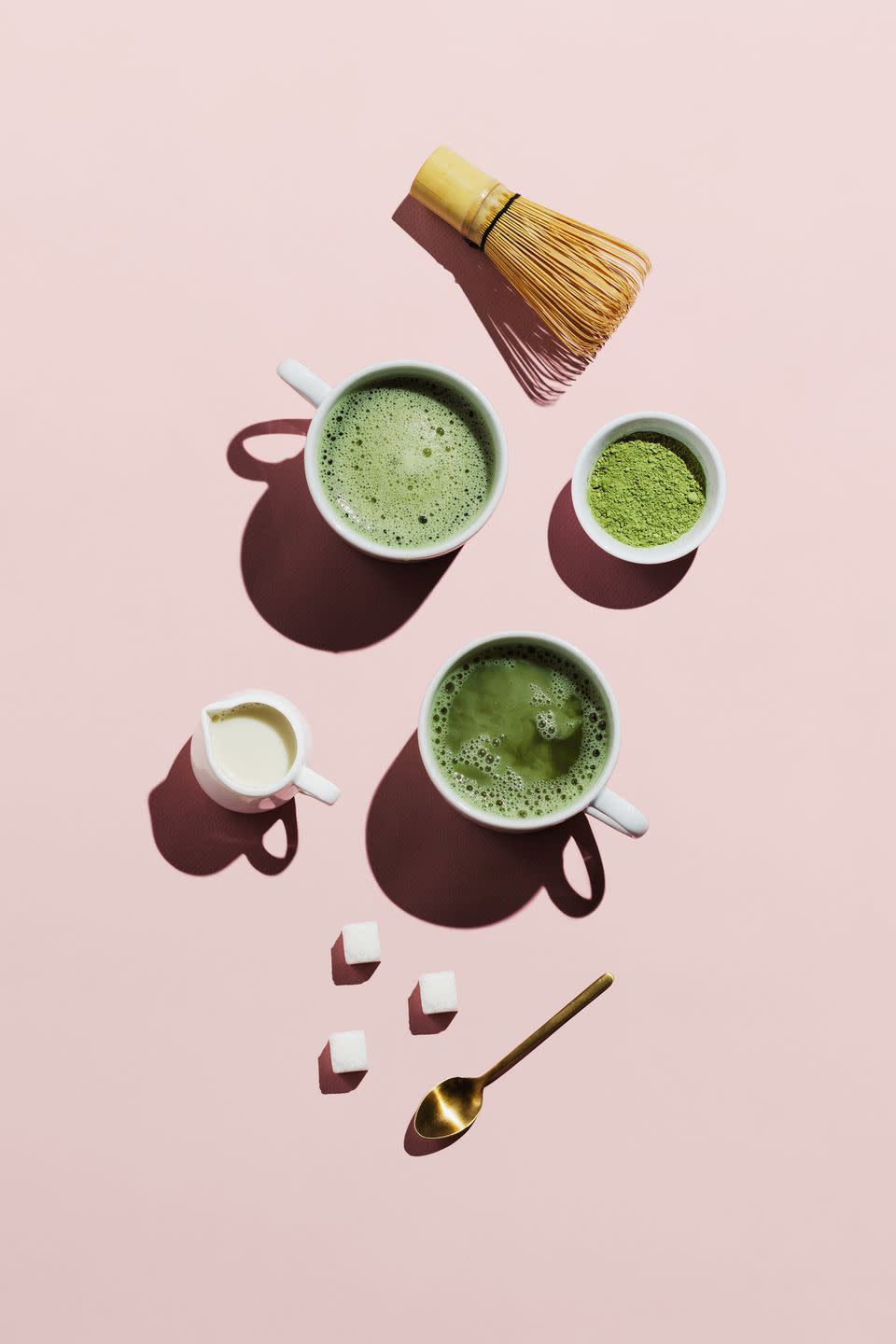
Green tea leaves are picked from the camellia sinensis plant then are sometimes withered a bit but are always cooked (either pan-fired or steamed) to prevent as much oxidization as possible, says Richardson. Stopping the oxidation process in its tracks helps to preserve their rich green color and the grassier taste
Flavor: grassy, vegetal, herbaceous
Examples of green tea: Jasmine, Matcha, Genmaicha, Hojicha
Potential health benefits of green tea: In one study, people who drank green tea three or more times a week had a 25% lower risk for heart disease, stroke and death compared to people who didn’t, but the healthy properties of green tea don’t stop there. “Green tea, specifically matcha, is high in antioxidants such as l-theanine, chlorophyll and polyphenols known as catechins,” says Amy Fischer, M.S., R.D., C.D.N., a registered dietitian in the Good Housekeeping Institute. “The catechin found in the greatest amount in green tea is EGCG and has been shown in studies to have anti-inflammatory benefits. While green tea is low in calories, it can easily be turned into an unhealthy beverage if too much sugar and milks or cream are added as with a lot of matcha lattes.”
White Tea
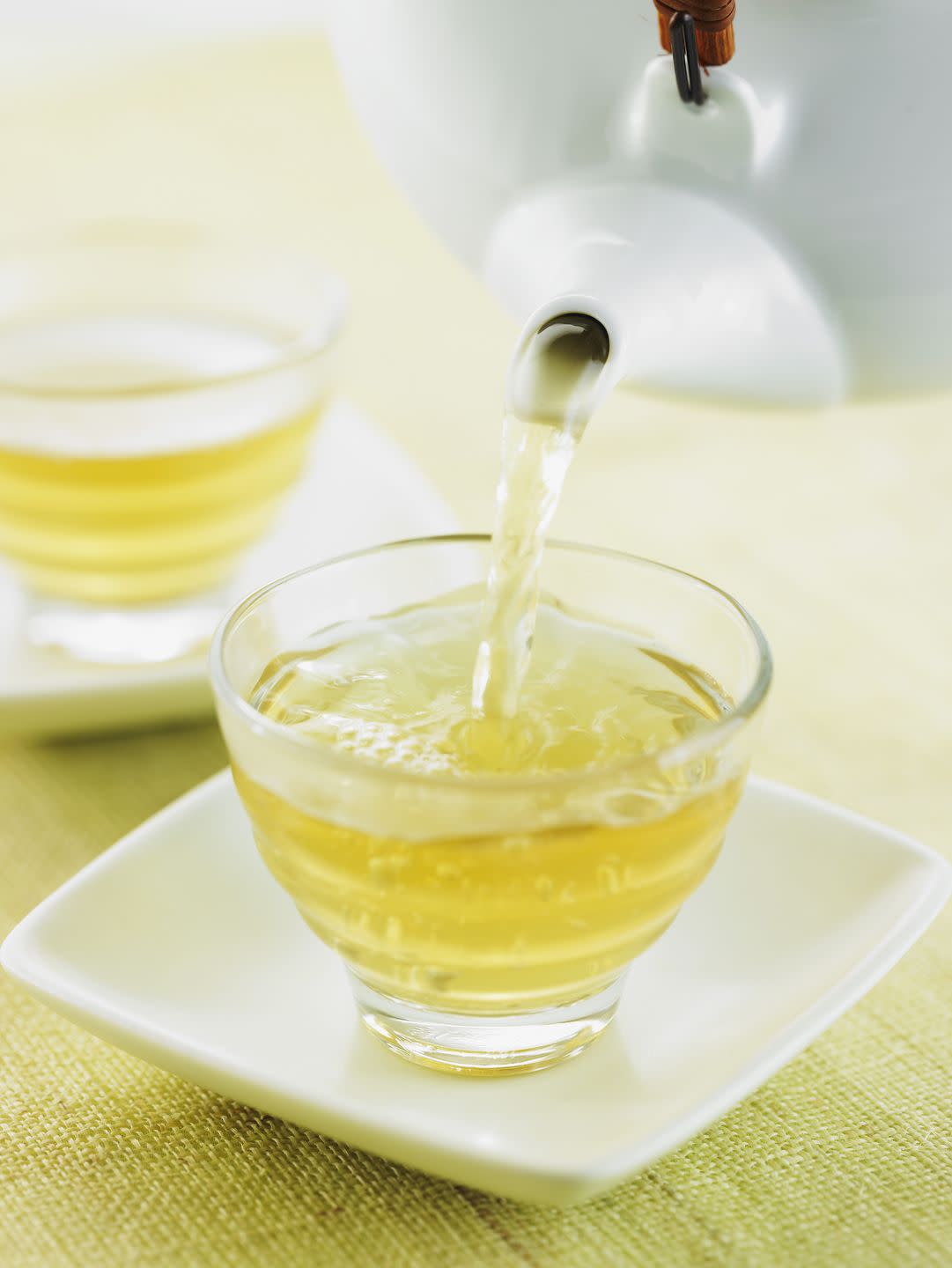
To make white tea, harvesters need to snatch the leaves when they are very young (even younger than green leaf harvests). When the leaves are merely buds, they are usually covered in "white downy fuzz", according to Richardson, which is where the "white" name comes from. Once they are plucked, they are dried to minimize oxidation.
Flavor: subtlety sweet, fruity, floral, mildly grassy
Examples of white tea: White Peony, Silver Needle, Shou Mei
Potential health benefits of white tea: “White tea is the most minimally processed of all the teas so it retains a higher number of polyphenols known as catechins,” says Fischer. “Research indicates that white tea has anti-inflammatory and antioxidant properties similar to green tea.” In particular, some research suggest that white tea could possibly be beneficial for wound healing and preventing the breakdown of collagen.
Black Tea
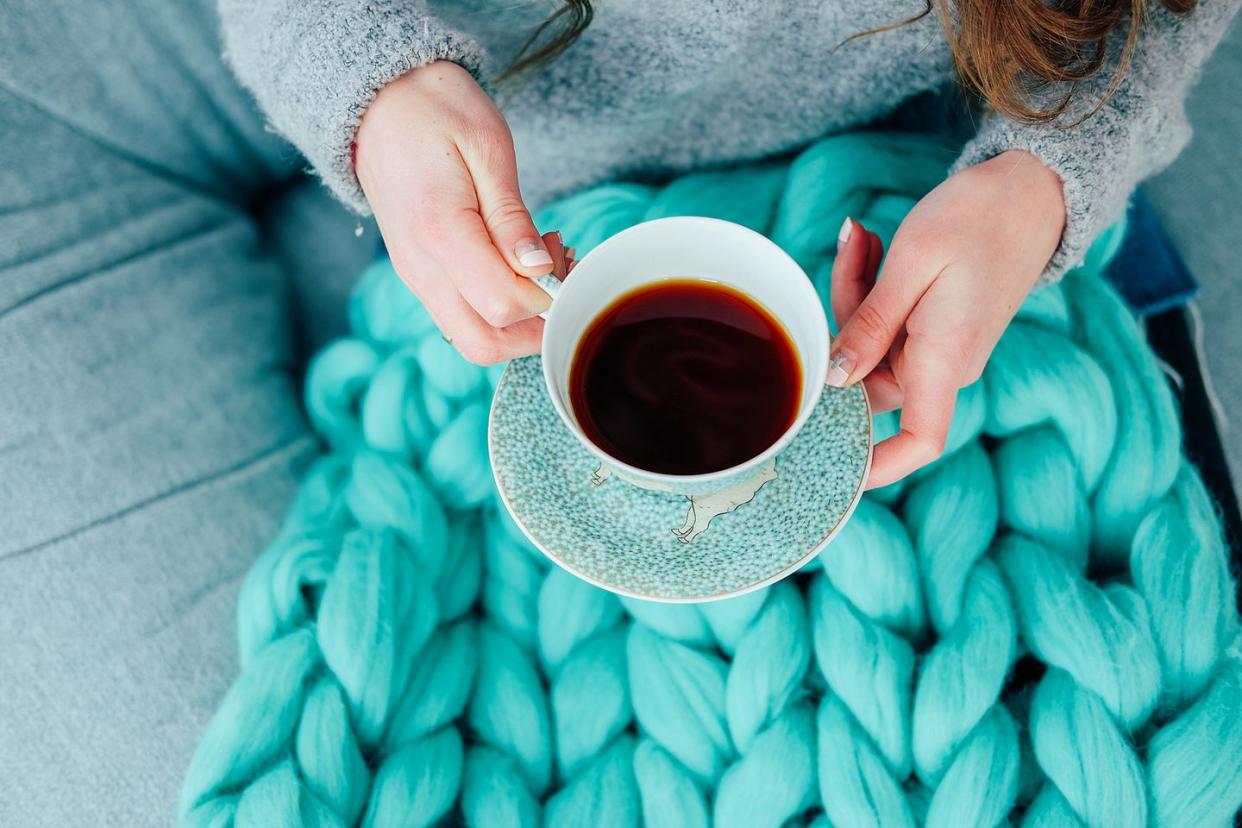
What makes black tea black is the oxidation process. When the leaves are rolled and then exposed to oxygen-rich air, they begin to produce theaflavin and thearubigin — antioxidant polyphenols that give the leaves their dark red/brown pigment. Eventually, they appear black. Oxidation is also what helps to give black tea its bold flavor profile.
Flavor: sharp, bitter, full-bodied, malty, floral
Examples of black tea: Earl Grey, Assam, English Breakfast, Darjeeling
Potential health benefits of black tea: Research shows that theaflavin in black tea may contribute to better blood sugar control and the prevention of some health conditions. Studies have also linked black tea with weight loss and some research on mice suggests it could be because black (and green) tea alters the gut bacteria by boosting the good gut microbes. One small study found that folks who drank at least four cups a week of green, oolong, or black tea for 25 years had more efficient connections in their brains than people who didn’t. Of course none of these are proven benefits, but the research suggests that drinking black tea can support good overall health.
Yellow Tea
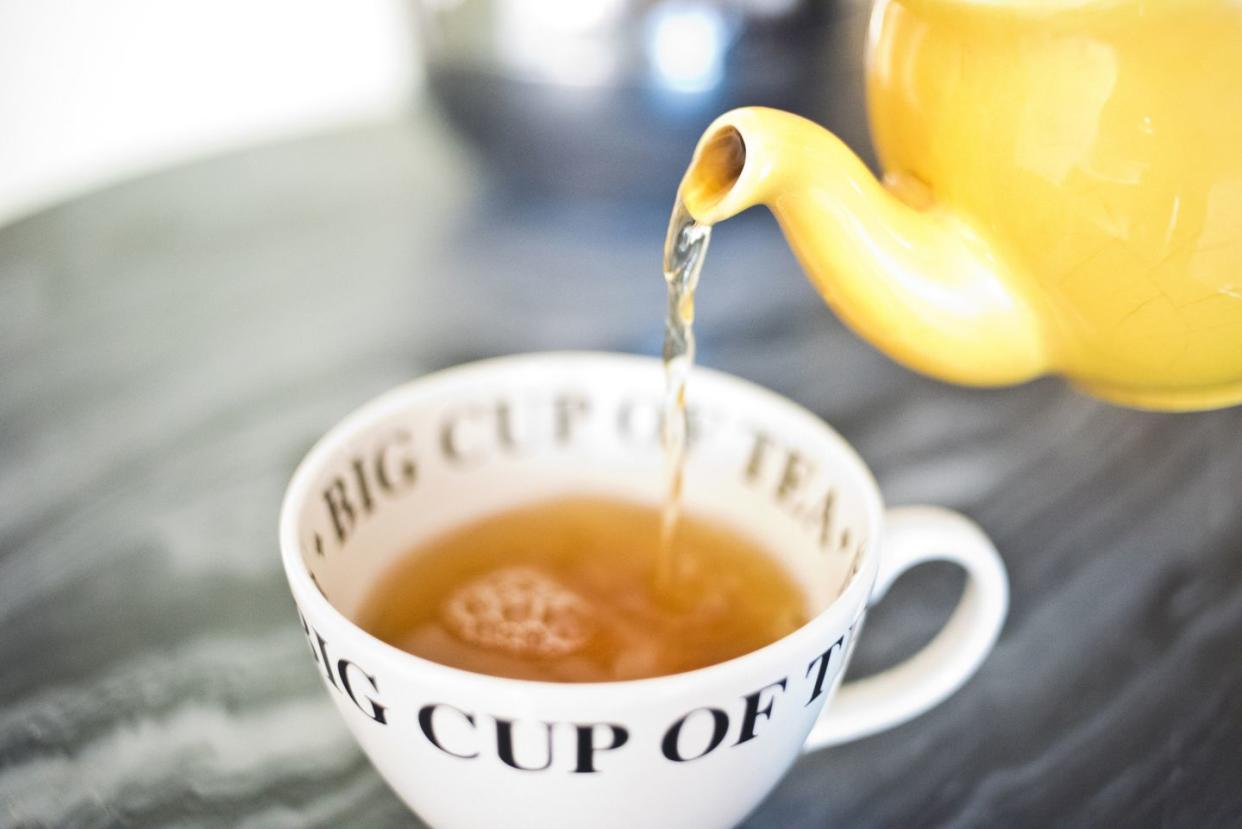
Yellow tea is growing in popularity, but it may still be one of the least known teas in the West since "it is difficult to source because the harvest time is short, the processing is complex and time-consuming, and, until recently, China was the only producer," Richardson writes in her book. Yellow tea is made with leaf buds plucked in early spring. They are then processed like green teas through pan-firing or treated with a gentle heating method called men huan (sealing yellow). Next, they are wrapped in paper or a dampened cloth and left to cool before potentially being pan-fired again. How many times they are pan-fired and how long they are wrapped depends on the tea maker, but this process can last three to four days, says Richardson.
Flavor: sweet honeysuckle and apple notes
Examples of yellow tea: Gentleman Mountain Silver Needles, Mengding Yellow Sprout, Huo Mountain Yellow Sprout
Potential health benefits of yellow tea: “It is a lightly fermented tea with antioxidant, anti-inflammatory and anti-cancer benefits, according to research,” says Fischer. “Yellow tea is processed in a way that may allow it to have increased antioxidant properties over other teas such as green and black.”
Oolong Tea
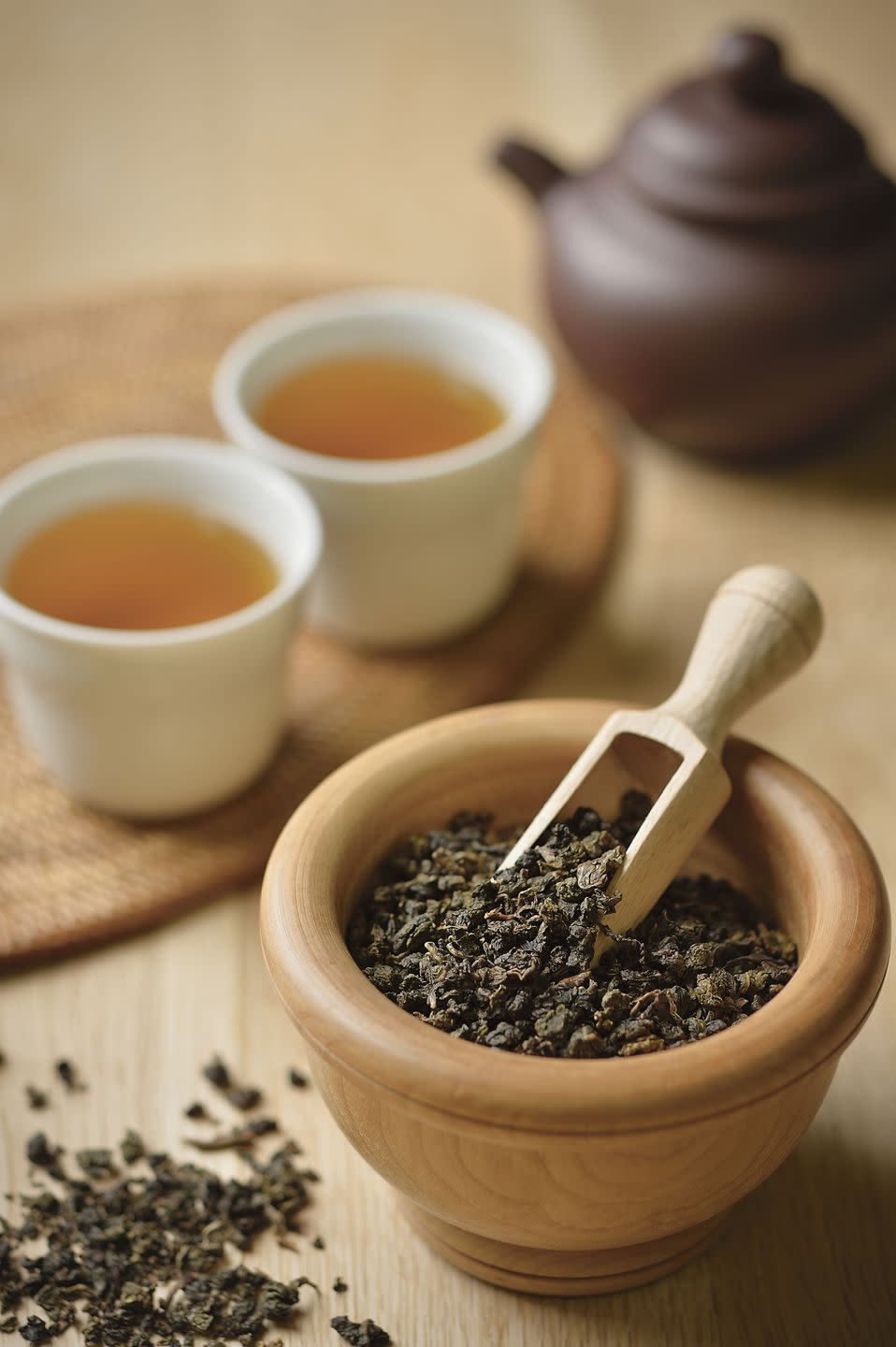
Oolong tea leaves are partially oxidized so many of them don't quite reach that dark, full-bodied taste of black teas, but this brew has its own delicious flavor. The taste of oolong varies greatly depending on how long the tea maker decides to oxidize the leaves. "The levels of oxidation can range anywhere from as little as 10%, making it similar in appearance to green tea, to as much as 80%, resulting in what looks like black tea," writes Richardson.
Flavor: toasty, slightly sweet, potentially grassy, sometimes floral or fruity
Examples of oolong tea: Baozhong, Tung Ting, Tie Guanyin, Da Hong Pao, Bai Hao
Potential health benefits of oolong tea: “Oolong tea is made from varying levels of oxidation which can affect the level of antioxidants available in it as well as the caffeine strength, taste and flavor,” says Fischer. “That said, oolong contains the same antioxidants found in green and black tea. It is a good source of the amino acid L-theanine and a rich source of polyphenols. Consumption of oolong tea has been associated with a reduced risk of death from heart disease and reduced risk of developing type II diabetes.” Research has even found that people who regularly drink oolong or green teas have a significantly lower risk of developing high blood pressure than those who don’t.
Dark tea (Pu'erh)
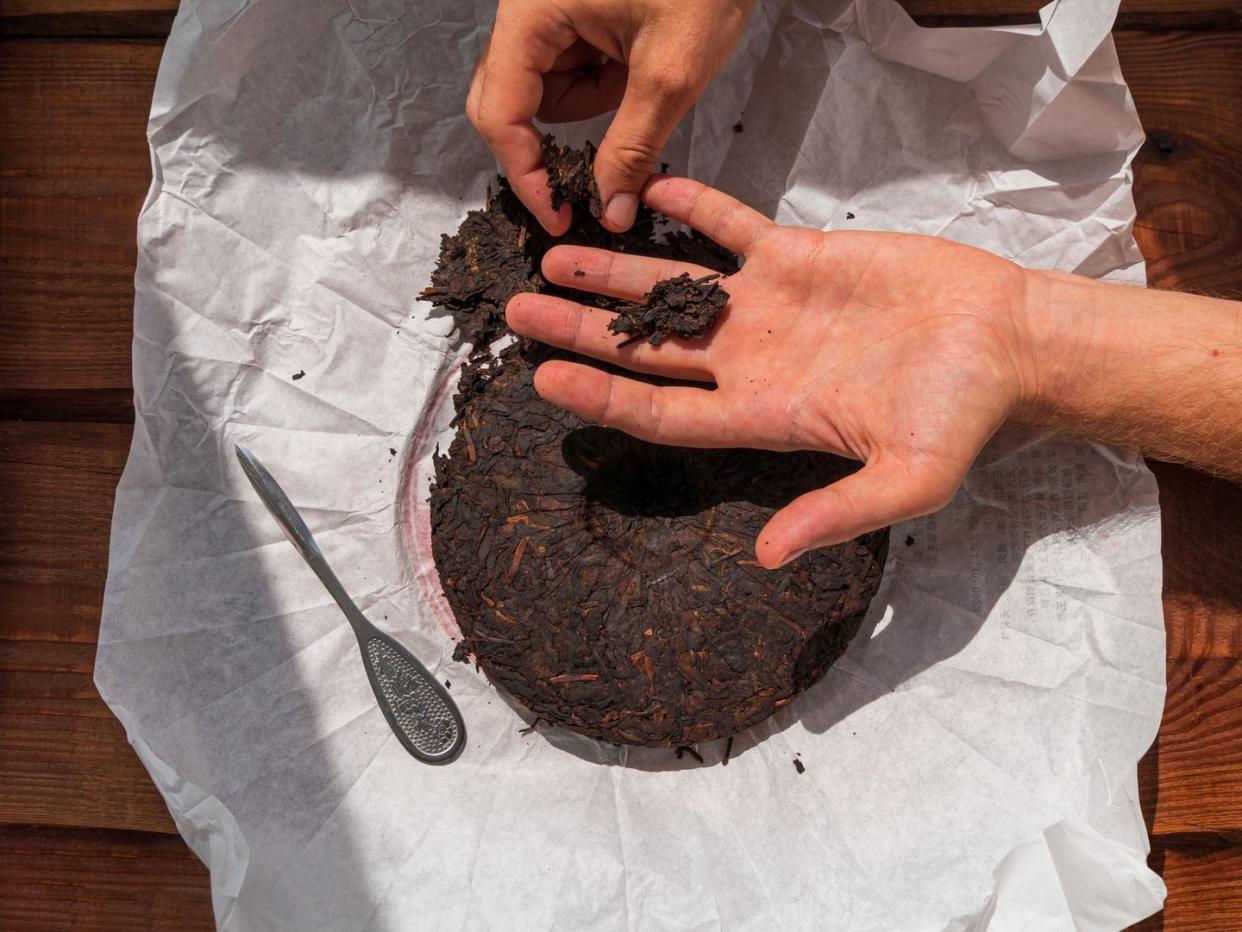
Pu'erh — which originated in Yunnan Province in China and now is popularly called "dark tea" in the West — goes through an extra step that other teas skip: a fermentation process that is often kept secret by tea makers, says Richardson. In general, "fermentation is the chemical breakdown of a substance by bacteria, yeasts, or other microorganisms, typically involving effervescence and the giving off of heat," says Richardson. After fermentation, the leaves are aged for a while — sometimes for years.
Flavor: earthy, smooth, woodsy, slightly sweet
Examples of dark tea: Shen Pu'erh, Shou Pu'erh
Potential health benefits of pu’erh tea: “The fermentation of the tea leaves can provide healthy gut-boosting bacteria in each cup,” says Fischer. “It also contains a natural statin and may help to reduce the risk of heart disease.”
Other types of healthy tea
Because the “teas” below don’t come from the camellia sinensis plant, they’re not considered to be “true” teas. However, they’re quite popular and still may be good for your health.
Ginger
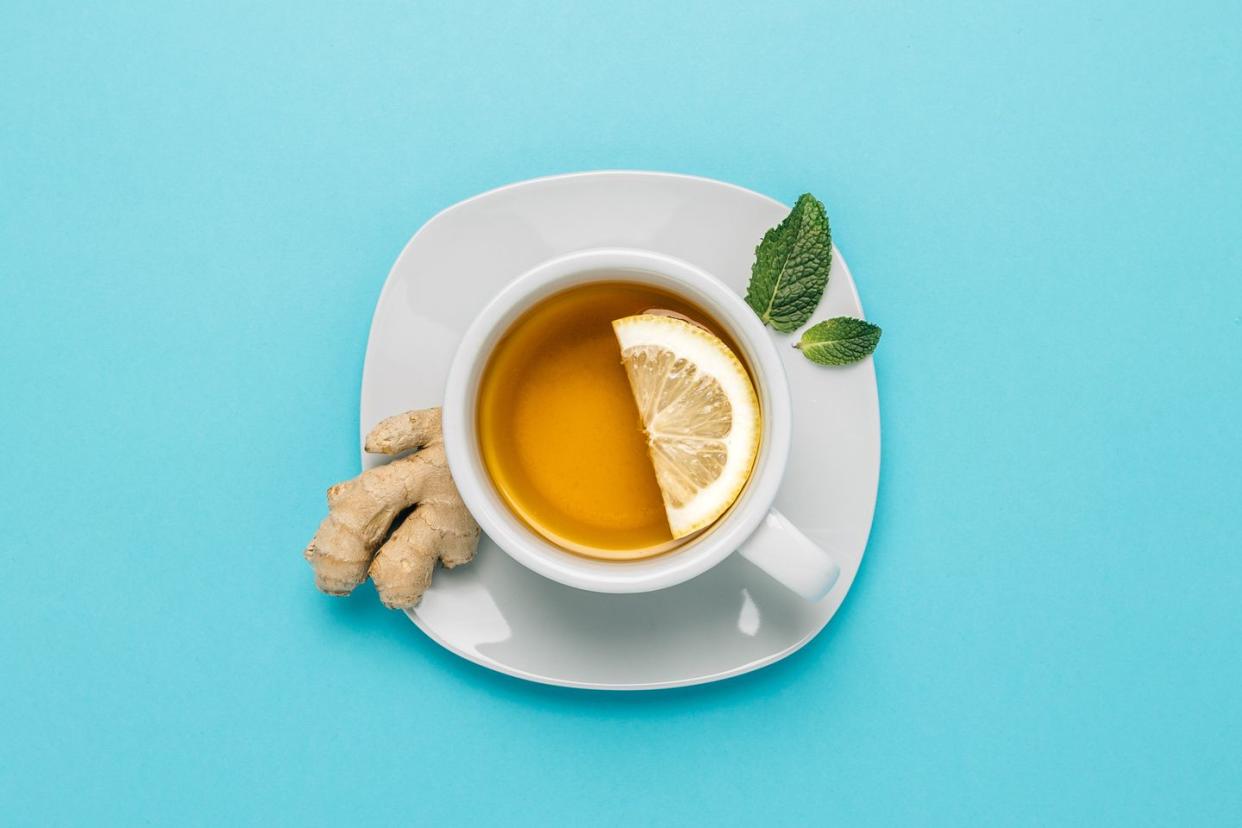
Ginger tea is simply ginger root mixed with water. You can slice, chop, or crush fresh ginger root and soak it in hot or cold water. However, if you purchase ginger tea, make sure you read the ingredients because ginger is often mixed with other things such as lemongrass, licorice root, peppermint leaf and black pepper, for more complexity.
Flavor: spicy, peppery
Potential health benefits of ginger tea: “Ginger tea has long been associated with being a digestive aid (think: ginger ale for an upset stomach),” says Fischer. “The reason is because ginger contains anti-nausea and anti-bloating properties from a compound called gingerol. It pairs well with lemon which adds a vitamin C boost and honey, although too much sugar from the honey can cancel out any health benefits.”
Peppermint Tea
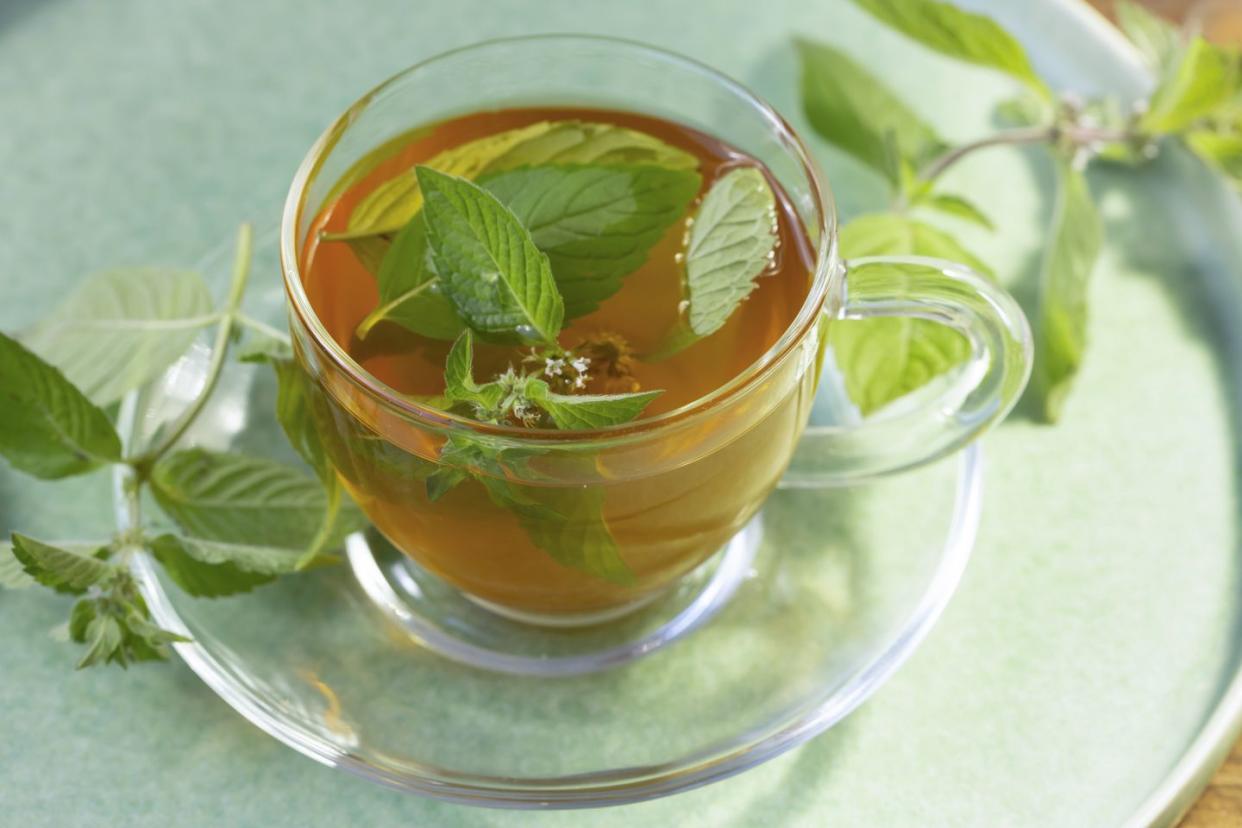
It probably comes as no surprise that peppermint tea is made by soaking fresh or dried leaves from the peppermint plant in water. If you don’t feel like making your own, plenty of companies sell peppermint tea.
Flavor: sweet, minty, cool, slightly spicy
Potential health benefits of peppermint tea: “Peppermint has also long been used as a digestive aid, although most research has been focused on peppermint oil which has shown to be an effective treatment for IBS symptoms including bloating and gas,” says Fischer. “Take note that peppermint tea can worsen symptoms of GERD and should be avoided in individuals with any symptoms.”
Chamomile Tea
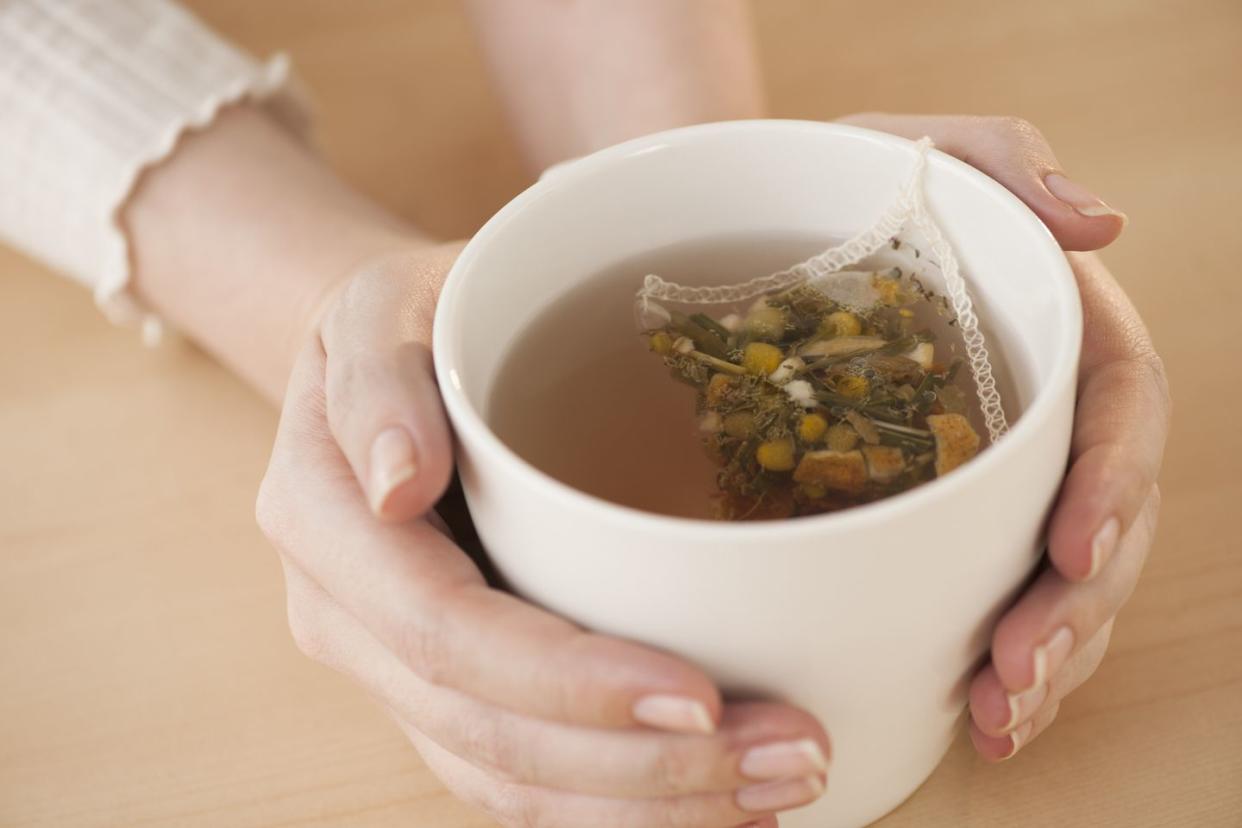
Dried flowers from the matricaria chamomilla L. plant are the basis for chamomile tea. Loose, dried chamomile flowers are available to purchase online if you want to make your own tea, or plenty of companies sell blends that contain chamomile along with other things like Pukka Love, which is a mix of chamomile, rose and lavender.
Flavor: sweet, floral, mild
Potential health benefits of chamomile tea: “Chamomile tea contains flavonoids which can help with bloating so it could be great to drink after meals or also to help with an upset stomach or nausea,” says Fischer. “Research has also indicated that chamomile may be helpful in alleviating symptoms associated with generalized anxiety disorder.”
What are the health benefits of tea?
Just to be clear: "Tea is food, not medicine," says Richardson. In other words, it has not been proven that tea can cure or heal any disease or ailment. Nor is there any solid evidence of tea being able to speed up your weight loss journey, she adds. So don't bother shelling any cash on those so-called "fat-busting" detox teas. But tea does contain these nutrients, which researchers say may support good health:
Polyphenols: These act as antioxidants that help to fight free radicals that damage cells, according to the Harvard T.H. Chan School of Public Health. This may be why some research has shown an association between drinking two to three cups of tea daily and a reduced risk of premature death, coronary artery disease, stroke and type 2 diabetes. Some other studies show conflicting results, but that may be because polyphenol content varies among tea types and brands depending on how it’s processed. Research has also shown that adding milk, honey or lemon can interfere with how polyphenols affect your body.
Methylxanthine: Most of us are familiar with the most talked about methylxanthine — caffeine. Yes, it can provide an energy boost when we are feeling sluggish or foggy, but unlike caffeinated drinks like that make you feel jittery, tea may offer you a gentler experience because it tends to have less caffeine. In fact, one cup of brewed coffee has 94.8mg of caffeine while one cup of tea has 26.2mg. Tea also contains two other types of methylxanthines, theophylline and theobromine, which are both considered to be muscle relaxants, Richardson says. This may counteract the jitteriness caused by caffeine.
L-theanine: This amino acid is the other reason why tea doesn't make you as wired as coffee, according to Richardson. "It keeps you alert, but it is also very soothing," she says. Some scientists believe this is because L-theanine can pass through the blood-brain barrier and increase alpha brain waves associated with mental states of alert relaxation (like when you're daydreaming or meditating).
Again, drinking tea probably isn't going to lead to health miracles, but Richardson finds that the greatest benefit of drinking hot tea is how it encourages you to slow down during the day and practice mindfulness. "Just sitting quietly, drinking a cup of tea will give you that mind-body-soul connection," she says. "Stepping aside and giving yourself ten minutes in the middle of the day can rejuvenate your mind."
The bottom line:
In short, there's a whole world of tea to explore. Each brand and variety have their own distinct flavor profiles — and potentially their own health benefits. Just remember there's not enough research to declare that any tea will have a significant impact on anyone's physical health. But most teas do contain beneficial nutrients and routinely taking some time to sit, breathe and sip on your favorite brew may do wonders for your mental well-being.
You Might Also Like
